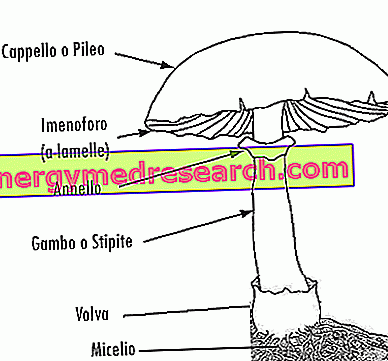
What is Tandemact?
Tandemact is a medicine that contains two active substances: pioglitazone and glimepiride. It is available as white, round tablets (30 mg of pioglitazone and 2 or 4 mg of glimepiride, or 45 mg of pioglitazone and 4 mg of glimepiride).
What is Tandemact used for?
Tandemact is used to treat adult patients with type 2 diabetes mellitus (also known as non-insulin dependent diabetes mellitus). It is indicated in the treatment of patients for whom metformin (a type of diabetes medicine) is contraindicated and who are already treated with a combination of tablets containing the two active substances, pioglitazone and glimepiride.
The medicine can only be obtained with a prescription.
How is Tandemact used?
The usual dose of Tandemact is one tablet once a day to be taken immediately before or during the main meal. The tablets should be swallowed whole with some water. Patients who are taking pioglitazone in combination with another medicine from the same class as glimepiride (ie another sulphonylurea) should change this other sulfonylurea with glimepiride before switching to Tandemact. Patients who experience hypoglycemia (low blood sugar) when taking Tandemact should reduce the dose of the medicine or go back to using separate tablets.
Tandemact should not be given to patients who have severe kidney problems or who have liver problems.
How does Tandemact work?
Type 2 diabetes is a disease due to the fact that the pancreas does not produce enough insulin to control the level of glucose (sugar) in the blood, or in which the body is unable to use insulin effectively. Tandemact contains two active ingredients, each of which has a different action. Pioglitazone makes cells (fat, muscle and liver) more sensitive to insulin, which allows the body to better use the insulin it produces. Glimepiride is a sulphonylurea, which is a substance that stimulates the pancreas to produce more insulin. The result of the combined action of the two active ingredients is a reduction in the level of glucose present in the blood, which helps to control type 2 diabetes.
What studies have been carried out on Tandemact?
As pioglitazone is authorized in the European Union (EU) since 2000 under the name of Actos and glimepiride is already used in medicines authorized in the EU, the company presented data obtained in previous studies and taken from the published literature. The use of Actos is approved in combination with a sulphonylurea in type 2 diabetics who are not satisfactorily controlled on metformin alone. The company used three studies to support the use of Tandemact in the same indication.
These studies included 1 390 patients who added pioglitazone to their treatment with a sulphonylurea. In these studies, which lasted from four months to two years, the level of a substance called glycosylated hemoglobin (HbA1c) in the blood was measured, which gives an indication of the effectiveness of blood glucose control.
In these studies, pioglitazone and sulfonylureas were given as separate tablets. The company provided evidence that the levels of the active ingredients in the blood of people treated with Tandemact were the same as those of people treated with separate tablets.
What benefit has Tandemact shown during the studies?
In all three studies, patients given a combination of pioglitazone and a sulphonylurea showed improvement in blood glucose control. The HbA1c levels of patients, which at the beginning of treatment (baseline) exceeded 7.5%, decreased by 1.22 - 1.64%. At least 64% of patients responded to therapy, ie their HbA1c levels decreased by at least 0.6% compared to baseline during the studies or these levels proved to be equal to or less than 6.1% at the end of the studies .
What is the risk associated with Tandemact?
The most common side effects of Tandemact (seen in between 1 and 10 patients in 100) are weight gain, dizziness, flatulence (intestinal gas) and edema (localized swelling). For the full list of all side effects reported with Tandemact, see the Package Leaflet.
Tandemact must not be used in patients who may be hypersensitive (allergic) to pioglitazone, glimepiride or to any of the excipients, or to other sulfonylureas or sulfonamides. It should not be used by patients with heart failure, liver disorders or severe kidney problems. It should not be used by patients with type 1 diabetes (insulin-dependent diabetes), patients with diabetes complications (diabetic ketoacidosis or diabetic coma) or women during pregnancy or breastfeeding.
Doses of Tandemact may need to be modified if the drug is taken with other medicines. The complete list of these medicines can be found in the summary of product characteristics, which is also part of the EPAR.
Why has Tandemact been approved?
The Committee for Medicinal Products for Human Use (CHMP) concluded that the efficacy of pioglitazone and glimepiride in type 2 diabetes has been demonstrated and that Tandemact simplifies treatment and improves patients' ability to stick to their treatment when a combination of the two active ingredients. He decided that Tandemact's benefits are greater than its risks for the treatment of type 2 diabetes in patients who do not tolerate metformin or for whom metformin is contraindicated and who are already treated with a combination of pioglitazone and glimepiride and recommended the granting of the marketing authorization of
Tandemact.
More information on Tandemact
On 8 January 2007, the European Commission granted a marketing authorization valid throughout the European Union for Tandemact to Takeda Global Research and Development Center (Europe) Ltd.
For the full EPAR for Tandemact, click here.
Last update of this summary: 04-2008



